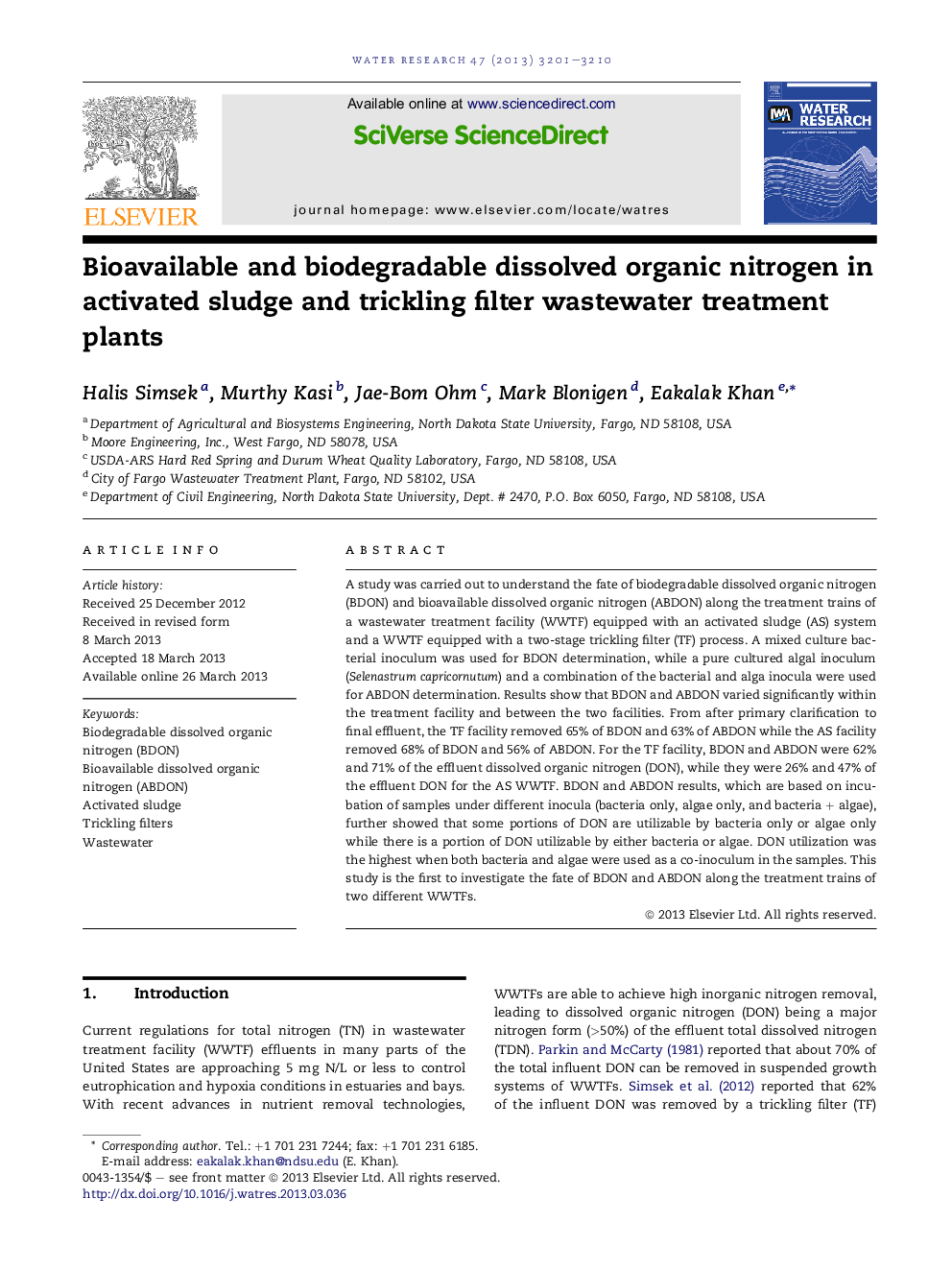| کد مقاله | کد نشریه | سال انتشار | مقاله انگلیسی | نسخه تمام متن |
|---|---|---|---|---|
| 4482135 | 1316848 | 2013 | 10 صفحه PDF | دانلود رایگان |

• Activated sludge and trickling filter had similar BDON and ABDON removal abilities.
• Tricking filter was more efficient in DON removal than activated sludge.
• Trickling filter effluent was more biodegradable than activated sludge effluent.
• Trickling filter effluent was more bioavailable than activated sludge effluent.
• A portion of effluent DON was not utilizable by bacteria but utilizable by algae.
A study was carried out to understand the fate of biodegradable dissolved organic nitrogen (BDON) and bioavailable dissolved organic nitrogen (ABDON) along the treatment trains of a wastewater treatment facility (WWTF) equipped with an activated sludge (AS) system and a WWTF equipped with a two-stage trickling filter (TF) process. A mixed culture bacterial inoculum was used for BDON determination, while a pure cultured algal inoculum (Selenastrum capricornutum) and a combination of the bacterial and alga inocula were used for ABDON determination. Results show that BDON and ABDON varied significantly within the treatment facility and between the two facilities. From after primary clarification to final effluent, the TF facility removed 65% of BDON and 63% of ABDON while the AS facility removed 68% of BDON and 56% of ABDON. For the TF facility, BDON and ABDON were 62% and 71% of the effluent dissolved organic nitrogen (DON), while they were 26% and 47% of the effluent DON for the AS WWTF. BDON and ABDON results, which are based on incubation of samples under different inocula (bacteria only, algae only, and bacteria + algae), further showed that some portions of DON are utilizable by bacteria only or algae only while there is a portion of DON utilizable by either bacteria or algae. DON utilization was the highest when both bacteria and algae were used as a co-inoculum in the samples. This study is the first to investigate the fate of BDON and ABDON along the treatment trains of two different WWTFs.
Figure optionsDownload high-quality image (171 K)Download as PowerPoint slide
Journal: Water Research - Volume 47, Issue 9, 1 June 2013, Pages 3201–3210